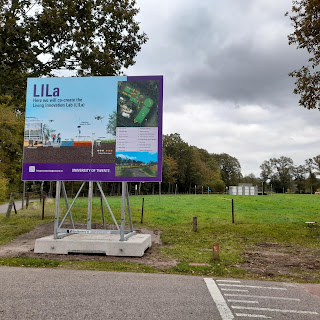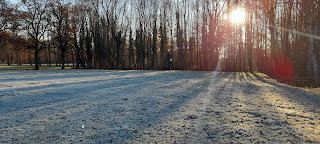There are two events in May giving international attention to plants.
One is the International Day of Plant Health, 12 May, designated by the UN's Food and Agricultural Organization. The other is the Fascination of Plants Day, May 18, organized by the European Plant Science Organization. This is organized every two years, so we can prepare for next year. As they write:
"The goal of this activity is to get as many people as possible around
the world fascinated by plants and enthused about the importance of plant science for
agriculture and sustainable production of nutritious food, as well as for horticulture,
forestry and the production of plant-based non-food products such as paper, timber,
chemicals, energy and pharmaceuticals. The role of plants in environmental conservation
is also a key message."
For LILa Green Infrastructure it is crucial to consider which plant species to apply, and there are several requirements.
- Endemic species
- Climate resilient (also to the future local climate)
- Carbon sequestering
- Favorable for bees and other insects
- Mixture of species that complement each other
- Low maintenance
- Cheap?
Luckily, we may have already found a supplier specialized in specifically taking these considerations into account. Dakbloemenweide has 5 years experience developing green roofs with endemic species, experimenting with different mixtures of species and aiming at higher biodiversity of both flora and fauna. We hope to apply their principles and services on site once construction is allowed.
Alternatively, the IVN provides a 'Tuiny Forest' mixture of endemic species of which some might fulfill our other requirements. These consist of the following (Dutch/Latin species names):
Trees
- Zoete kers/Prunus avium
- Gewone Haagbeuk/Carpinus betulus geleverd)
- Wilde Lijsterbes/Sorbus aucuparia
- Boswilg/Salix caprea
- Veldesdoorn/Acer campestre
Shrubs:
- Wilde Kardinaalsmuts/Euonymus europaeus
- Sporkehout/Rhamnus frangula
- Rode Kornoelje/Cornus sanguinea
- Egelantier roos/Rosa rubiginosa
- Sleedoorn/Prunus spinosa
Herbs:
- Duizendblad
- Gewone Ossentong
- vertakte leeuwentand
- Gewone Margriet
- Gewoon Barbarakruid
- Gewone Rolklaver
- Akkerklokje
- Muskuskaasjeskruid
- Korenbloem
- Wilde Marjolein
- Knoopkruid
- Middelste Teunisbloem
- Grote Centauri
- Gewone Chichorei
- Grote Klaproos
- Scherpe boterbloem
- Wilde Peen
- Blaassilene
- Sint Janskruid
- Duifkruid
- Gewoon Biggenkruid
- Dagkoekoeksbloem
- Beemdkroon
- Veldsalie
- Rode Klaver
- Lange Ereprijs
- Zwarte toorts
We hope this information inspires you to think of what species you might plant in your next project.























